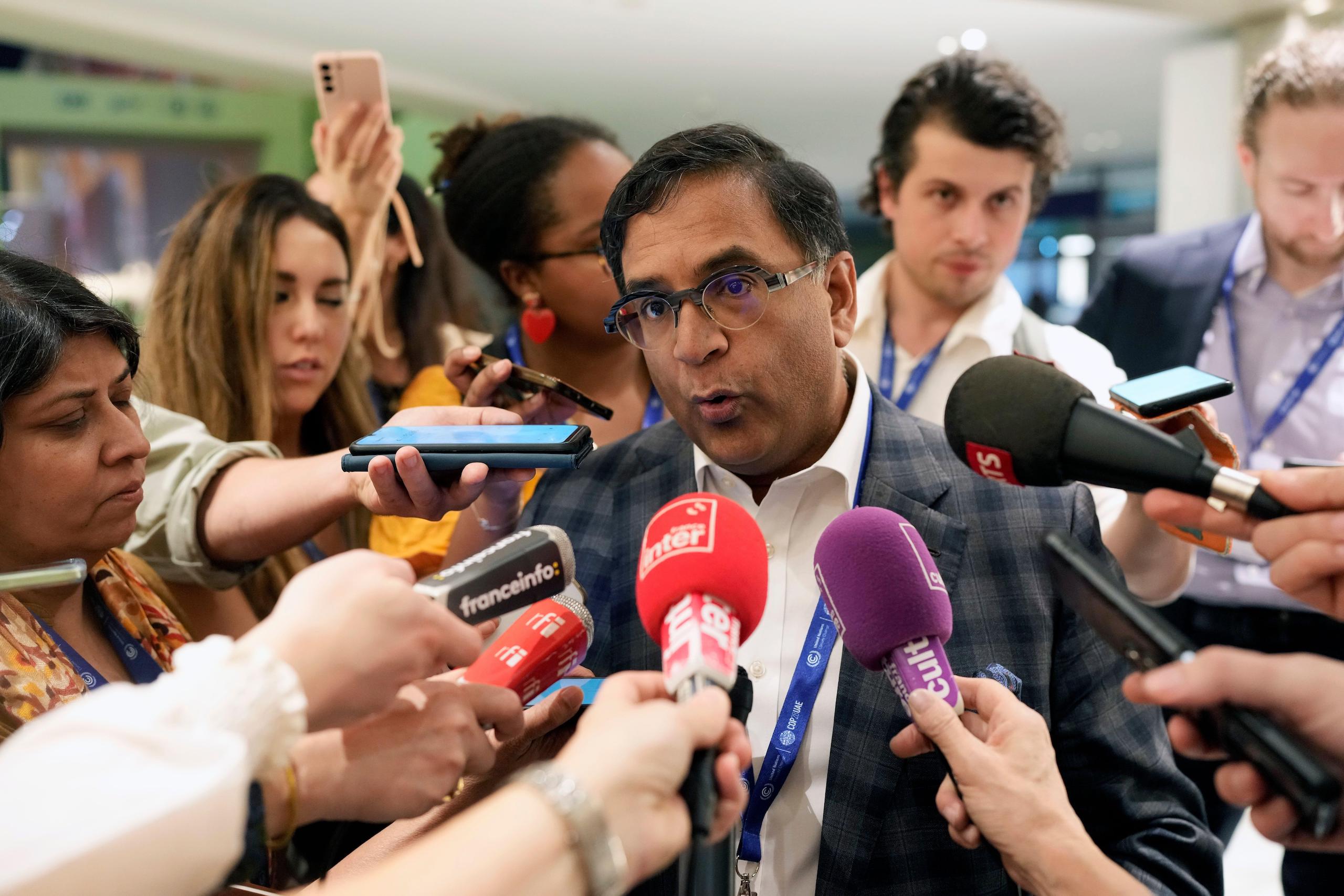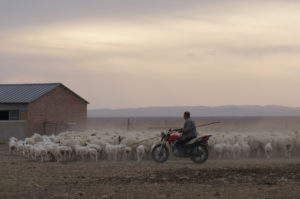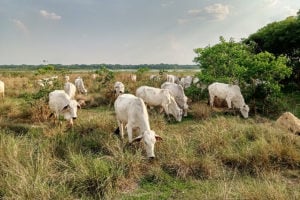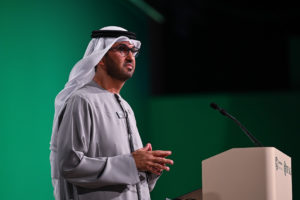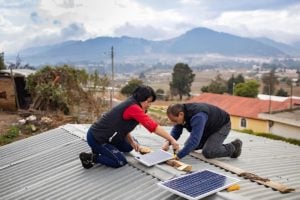As it opened last Thursday, COP28, this year’s UN climate summit, kicked off on a high note with an agreement to put into operation a long-awaited fund to help compensate vulnerable nations for the impacts of climate change. Governments collectively pledged more than US$400 million to this “loss and damage” fund during the first days of the conference, which is being hosted in Dubai.
The creation of the fund, first announced at last year’s COP27, is one of the key demands of the Bridgetown Initiative, a Barbados-led plan to reform the global financial system so it better supports the world’s poorest nations. The plan demands that debt and development lending be restructured, and more private investment be ploughed into clean energy. It seeks to mobilise an additional $1 trillion to build up resilience to climate change impacts in developing nations. Some studies estimate annual losses and damage from such impacts in these nations may already be as high as $400 billion.
The Bridgetown Initiative has been driven by Barbados prime minister Mia Mottley, along with her special envoy on finance, Avinash Persaud.
Persaud, an economist whose career has spanned academia, business and policy, talked to Diálogo Chino at COP28 about the initiative’s progress. Since its launch at COP26 in 2021, concrete actions to change the global financial system have begun to be taken, he explained. The special envoy also discussed the road ahead after COP28, including the role China can play in climate finance. The interview has been edited for length and clarity.
Diálogo Chino: The new loss and damage fund, set into action here at COP28, aims to help vulnerable countries cope with the impacts of the climate crisis. But how do you define vulnerability?
Avinash Persaud: For the fund, we are looking at extreme weather or slow-onset events, such as sea-level rise, those that cost more than 5% of the GDP. Smaller countries are more likely to reach that limit, but big countries can also be eligible if they have a big disaster. The board of the loss and damage fund will have to define the exact GDP percentage that will apply. Rich countries were keen on only small states or the poorest countries being eligible. I told them it should be broader than that; we as small states were happy to say this. Any developing nations experiencing an extreme weather or substantial slow-onset event should be eligible. They might not get funds equal to their GDP loss, if they have other resources, but the key thing is about need.
Developed countries pledged in 2009 to provide US$100 billion per year in climate finance for developing countries by 2020. Not only has that not happened, but developing countries and many organisations argue that the real finance needs are now much higher – at least $2 trillion a year, by some estimates. Is it feasible to meet those numbers?
As developing countries, we have sometimes had unrealistic demands. We can’t say that we want $2.4 trillion to be transferred from other taxpayers to us. That’s not going to happen. The total aid given in the world is $200 billion. Governments are not even funding their own people now – they are reducing unemployment benefits and pensions.
We have to be much more realistic. That’s what the Bridgetown Initiative is seeking. We are saying “I don’t need your money for mitigation. I’m not asking for $2.4 trillion. There’s the private sector for that. I need your money for loss and damage, as that can’t be funded any other way.”
We are also open to the idea of new international taxes. Aviation, shipping and carbon border adjustment levies. We want to make them as progressive as possible, relative to income, so they aren’t a burden on developing countries. But we would be paying part of it.
• Making the global financial system more shock-absorbent
“We are having more profound shocks because of climate change. The way to make the system more shock-absorbent is to have pause clauses on all debt instruments. When a natural disaster happens, you can stop paying your interest for two years and then you pay back with the same level of interest that you began with later on. It gives you breathing space during a disaster. Pause clauses are now widely accepted.”
• Setting up a loss and damage fund
“The amount of financing we need is far more than what is available. We have to break it down into things with revenues or savings, and things with pure cost. For things with revenue, we can get the private sector to fund them; for things with savings, we can get the development banks to fund that. We are left with the other bit: we need the international community to show global solidarity and support by creating things such as a loss and damage fund.”
• Reforming development lending institutions
“Multilateral development banks need to become bigger and lend long-term and at low-cost to climate-vulnerable countries. It doesn’t mean they will take out the money that’s now going to poor countries. They should lend more to them, but also lend to climate-vulnerable countries. There has been movement on that for the first time. There is a plan for banks to lend US$200 billion for the next 10 years. But they need to lend a trillion dollars.”
• Secure private sector support for mitigation
“Mitigation of greenhouse gases is the most expensive thing we are dealing with. But it has revenues, so we need to get the private sector to fund that. Governments shouldn’t be funding mitigation. They don’t have the money and should use their funds for things that the private sector won’t fund, like loss and damage. We are hoping that development banks can give guarantees to the private sector when they invest in reducing greenhouse gases. In rich countries, 81% of all mitigation is funded by the private sector. But in developing countries, it’s only 14%, due to currency risk and country risk. This is the area of the initiative that has progressed the least.”
UN rules classify countries as developed and developing, and this affects their responsibility for climate action and eligibility for finance. The division stretches back to when the UN climate change convention was created in 1992. Should countries like China, a large economy but still considered developing, also pay into the loss and damage fund?
Climate finance is for developing countries that are climate-vulnerable and experience an extreme weather event or slow-onset event of a significant size – if China experiences that, they are eligible.
Regarding contributions, as developing countries, we need to make the case that global warming isn’t caused by current emissions. Greenhouse gases can stay in the atmosphere for a thousand years – 79% of the stock of greenhouse gases come from the countries that would be defined as developed in 1992. A big part of the other remaining part of the emissions comes from China. I’m happy for us to think about common but differentiated responsibilities as being a vital principle, but not stuck in some particular point of time in measurement. They should be evolving common but differentiated responsibilities.
China is doing more green transformation than anyone else in the world. It doesn’t want to be told what to do. But they are by far the biggest emitter currently. That would mean that, at some point, China should be a contributor.
One type of instrument widely discussed among Latin America and Caribbean countries are debt-for-climate swaps and debt-for-nature swaps. While some new swaps have been recently agreed, their size is still small compared to countries’ total debt. Can they be scaled up?
It’s not feasible to scale them up, they are not a panacea. Debt-for-nature swaps are the icing on the cake, but not the cake itself. For example, in Barbados, we now borrow on the market at 9% interest. If the Inter-American Bank (IDB) gets involved, it can guarantee our debt to borrow at 4%. We still have to pay that 5%, but it now goes for nature. It doesn’t solve our debt problem – it’s not debt cancellation. No one can guarantee all of our debt. I’m a finance guy, so I benefit from people thinking that finance is magic, but the reality is that it isn’t. It can’t create something from nothing. We can use finance as much as we can, but ultimately, we also need new money.
One of the main agenda points at this year’s COP is the Global Stocktake of progress on climate action, intended to outline what more is needed to limit global warming to 1.5C. What are you expecting countries to agree on?
We all know what’s in the Global Stocktake without reading it: the world is behind where it needs to be, especially on mitigation, but also on adaptation. As a result of that, we now have the loss and damage fund. Today, it costs over $150 billion per year but it could rise to $350 billion a year if we don’t catch up on mitigation. We need to create innovative forms of finance and preserve the planet. The next year has to be about stretching the development bank lending and getting champions for these new innovative forms of finance. Mia Mottley is a champion for these new global financial instruments.
At COP28, you were appointed as the new climate special adviser of the Inter-American Development Bank (IDB). Why did you decide to take on that role?
In the last 12 months, we have helped to shift the agenda. The Bridgetown Initiative has helped to bring pause clauses, allowing countries to pause debt repayments following disasters, to the front. And it has reinforced the message of the need to triple multilateral development bank lending.
It has also helped people realise that the private sector won’t come if we don’t have guarantees for macro risk and currency risk. Now it’s the time to implement. If we talk about the agenda and nothing happens, it will start breaking apart. We have to grab it now and make something with it. I will work on that implementation.
What I like about the IDB is that it is led by someone who is passionate about climate, and has a history of thinking about climate. They are also more nimble than other institutions, so it seems to be a good place to set that agenda.
Brazil is set to be the next chair of the G20, and thinking further ahead, it is set to host COP30 in 2025. What are you expecting from the country, and what role can it have in driving climate finance?
The developing world is excited about Brazil being the next G20 chair. Leaders don’t spend a lot of time thinking about the world. They spend time thinking about their issues. The G20 process makes leaders think about the world. Big developing G20 countries are going through a process of asserting themselves within the international arena, hoping to be treated with proper respect and concern. But we are not hearing from Brazil on how the world should treat small states.
The Bridgetown Initiative has gone a long way. It has come from small states, and we are all about how the world should treat big countries. We know that we can’t preserve the planet without big emerging countries being involved. We have been campaigning to get affordable finance to help Brazil with its transition to clean energy. But who is Brazil campaigning for? It’s a process G20 countries have to go through. The Amazon is going to be a major factor and it should be; the Amazon is critical to the world. But Brazil needs to develop a plan that is about the world, and not just about Brazil. It would be wrong to criticise Brazil for not having that plan yet, as no G20 country had that plan when they first became chair. Brazil has a leadership today that is willing to take on that ask.
This story was produced as part of the 2023 Climate Change Media Partnership, a journalism fellowship organized by Internews’ Earth Journalism Network and the Stanley Center for Peace and Security
